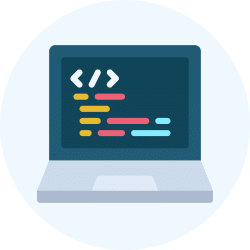Software Development Exam > Software Development Videos > Android Application Development (Mobile App) > Android Application Development Tutorial - 82 - Introduction to the FrameLayout
Android Application Development Tutorial - 82 - Introduction to the FrameLayout Video Lecture | Android Application Development (Mobile App) - Software Development
FAQs on Android Application Development Tutorial - 82 - Introduction to the FrameLayout Video Lecture - Android Application Development (Mobile App) - Software Development
| 1. What is FrameLayout in Android application development? |  |
Ans. FrameLayout is a type of layout container in Android that allows developers to stack multiple views on top of each other. It is commonly used to display a single view or control, such as an image or a button, at a time.
| 2. How does FrameLayout work in Android application development? |  |
Ans. FrameLayout works by placing child views on top of each other, with the last added child appearing on top. This allows developers to easily switch between different views by adding or removing them from the FrameLayout.
| 3. Can multiple views be displayed simultaneously in a FrameLayout? |  |
Ans. No, by default, only one view is visible at a time in a FrameLayout. However, it is possible to adjust the visibility of individual views programmatically to show or hide them as needed.
| 4. What are some common use cases for using FrameLayout in Android application development? |  |
Ans. FrameLayout is often used in situations where only one view needs to be displayed at a time, such as in a tabbed interface or a slideshow. It is also commonly used to create overlays or floating elements on top of other views.
| 5. Are there any limitations or considerations when using FrameLayout in Android application development? |  |
Ans. One limitation of FrameLayout is that it does not provide any automatic positioning or layout options for its child views. Developers need to manually manage the position and size of each child view within the FrameLayout. Additionally, if multiple child views have non-zero dimensions, they may overlap each other, requiring careful management of their placement.
Related Searches















